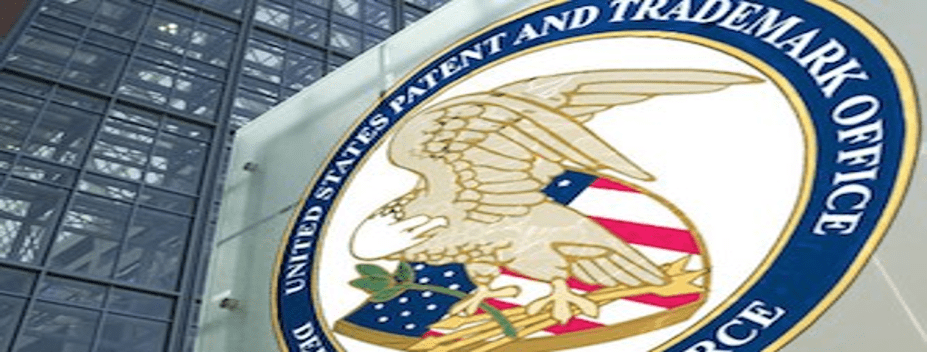By: Lucia Argento
Filing a patent application with the USPTO is one of the very first requirements to obtain a patent on an invention. Among other specifications, the patent application must state the name of the inventor. Under 37 CFR 1.63, an inventor applying for a patent application must execute an oath or declaration directed to the application, and that oath or declaration must identify the inventor or inventors by their legal name. This simple task is important because the improper naming of the inventor(s) can void the entire patent application if not stated correctly.
The USPTO is in a current legal battle with patent applicant, Stephen Thaler, who filed patent applications naming his AI invention, Devices and Methods for Attracting Enhanced Attention (“DABUS”), as the sole patent inventor. The USPTO denied the applications as incomplete because they were missing an inventor’s name. Thaler filed subsequent petitions asking the USPTO to reconsider their decision but they were firm on saying no and reiterating that the law has made it clear only humans can be inventors, not an artificially intelligent machine. International offices in the EU and China also rejected Thaler’s application under the same premise that the inventor named was not a human.
The USPTO references the Patent Act, which defines an inventor as an “individual who must be human.” In a motion for summary judgment they furthered their argument stating Thaler is looking to ignore the plain language the Patent Act provides and Federal Circuit court precedent that states an inventor must be a “natural person or human being.” The USPTO claims Thaler is looking to rewrite the longstanding Patent Act, which he has no authority to do. They base their claims on patent statutes like 35 U.S.C. Section 101 which refers to individuals and says whoever invents or discovers any new and useful process may obtain a patent for it. The USPTO explains that if they start to interpret the word “inventor” to include machines, it would contradict the plain meaning of the statutes in place that refer to inventors as persons and individuals. The USPTO believes the conception of inventor deals with a mental act and formation of the mind, a conception that must be performed by a natural person.
Thalers original argument relied on the allegation that the USPTO is violating the Administrative Procedure Act. This act governs how federal agencies develop and issue regulations. Thaler thinks that by refusing to allow his AI machine to be named as the inventor on his patent application, the USPTO is undermining the patent system by adding requirements “contrary to existing law.” Thaler says the USPTO is going against what lawmakers intended by finding only a human being can be named as an inventor on the patent application. According to him that will harm future innovations. In his complaint he says the offices position on AI generated inventions is “anti-intellectual property and anti-business, and it puts American businesses at an international disadvantage.” Thaler argues there is no evidence from Congress for which they intended to ban patents on AI generated inventions.
Ultimately, Thaler says allowing patents for AI generated inventions incentivizes the development of them and if the USPTO fails to acknowledge the inventive activity by AI, it will weaken the moral justifications for patents because it grants individuals the right to be credited on work they haven’t done. Thaler undermines his arguments relying on this moral justification argument when the law does not give the USPTO any authority to issue patents based on moral rights.
In anticipation of the hearing between Thaler and the USPTO at the end of March, it is likely amicus briefs will be considered that are submitted by third parties before the hearing takes place. Anyone who regularly uses or develops AI should see this as an opportunity to submit their thoughts on whether the USPTO should prohibit or permit an AI system to be the named inventor on a patent application. It is important for the court to receive input from “friends of the court” that could help them further understand potential capabilities of AI algorithms and how inventorship requirements influence innovation. A case like this one could shape patent criteria around the world.
Thaler has the potential to influence how parties may be allowed to pursue patents in similar cases involving an AI algorithm that identifies problems and assesses possible solutions. If algorithms are granted ownership, society will be forced to adapt to distinguishing between a human’s conception of an invention versus a machine’s contribution. However, if an algorithm is not granted ownership by the court in this case, there are two possibilities of outcomes; entities may claim undue credit for inventions or the incentive to develop further algorithms and innovations will be significantly lower knowing the slim possibility of obtaining a patent for the invention.
Student Bio: Lucia Argento is currently a second-year law student at Suffolk University Law School and a Staff Member of the Journal of High Technology Law. She received a Bachelor’s in Criminal Justice with a minor in Legal Studies from the University of Central Florida in 2017.
Disclaimer: The views expressed in this blog are the views of the author alone and do not represent the views of JHTL or Suffolk University Law School.

